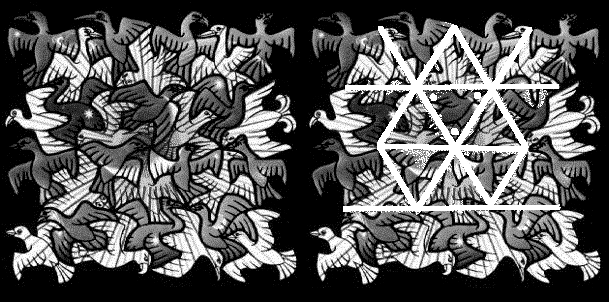Geometry can help us with this. First of all, on any surface, of any curvature, the sum of the angles at any point is equal to 360 degrees. Secondly, the sum of the interior angles of a triangle will be exactly 180 degrees for a flat surface, less than 180 degrees for a negatively curved surface, and more than 180 degrees for a positively curved one.
In these works, the creatures are tiled, so that their bodies fit together in regular patterns. To find the curvature, we can find a repeating triangular shape and count how many triangles intersect at different points. From this you can determine the size of each of the angles of the triangle.

In Figure 2, there are two types of birds, which are all roughly triangular (their vertices being the points where 6 birds are touching: the wing-tips and the beaks). The birds are all the same size in their space, so that the 6 angles at a vertex are all the same. There are always six birds coming together at a vertex, so that each of the interior angles (the white dots on the image to the right) of each bird's triangle is:
 Figure 3: Circle Limit 4 -- (Heaven and Hell)
by M.C.Escher (1960).
Figure 3: Circle Limit 4 -- (Heaven and Hell)
by M.C.Escher (1960).
